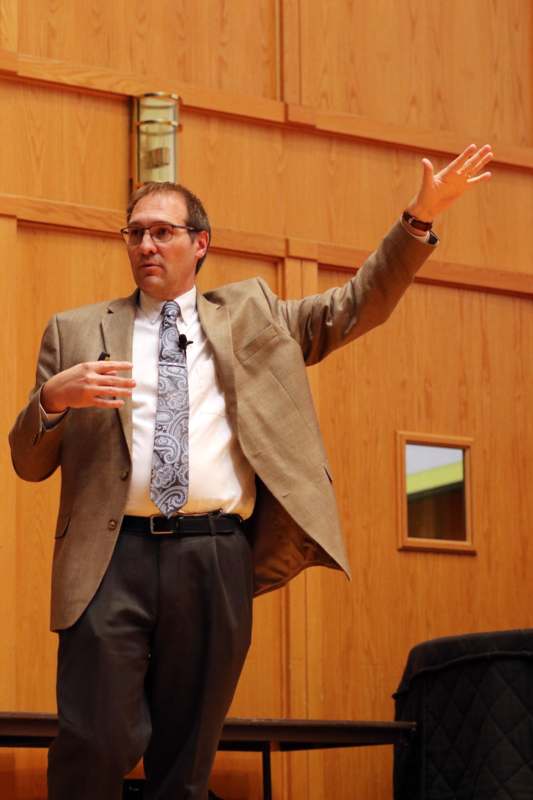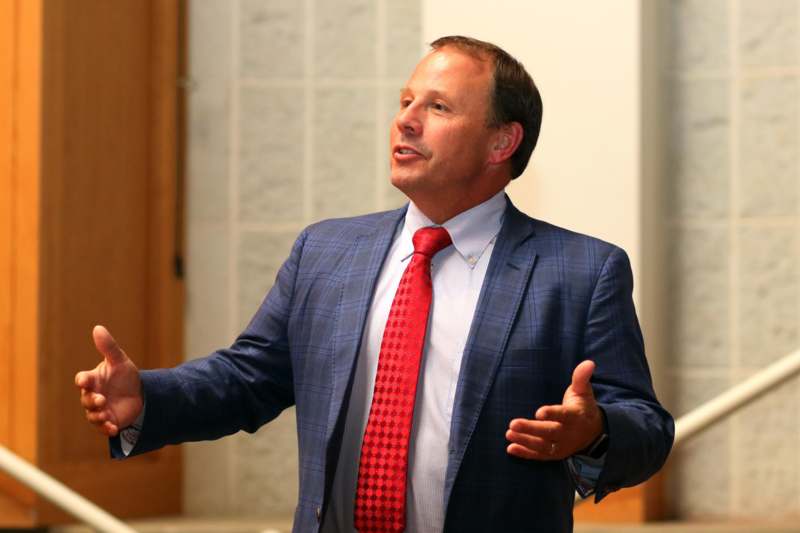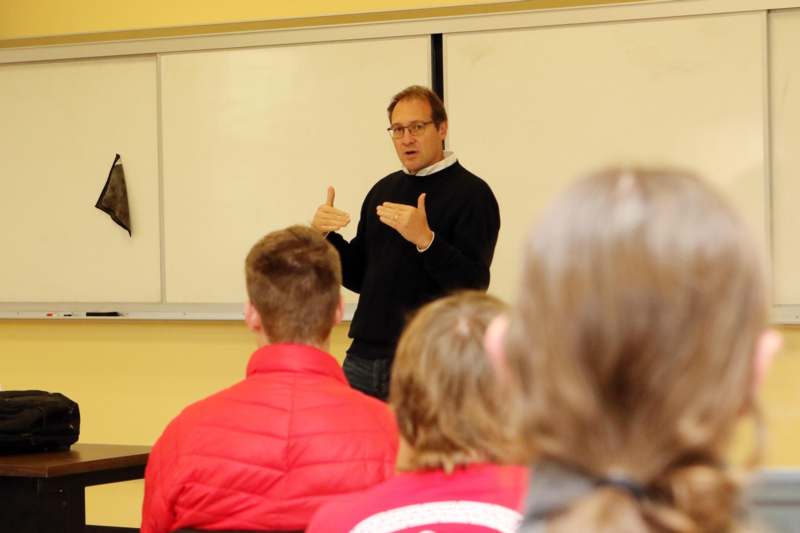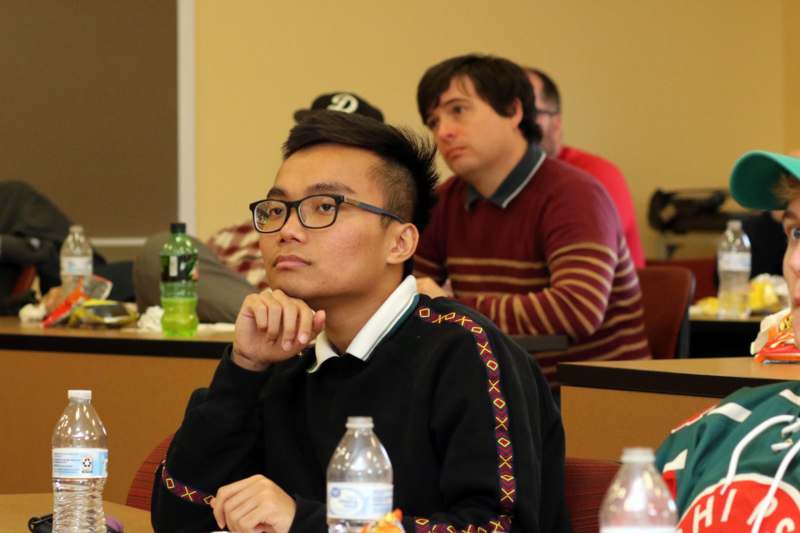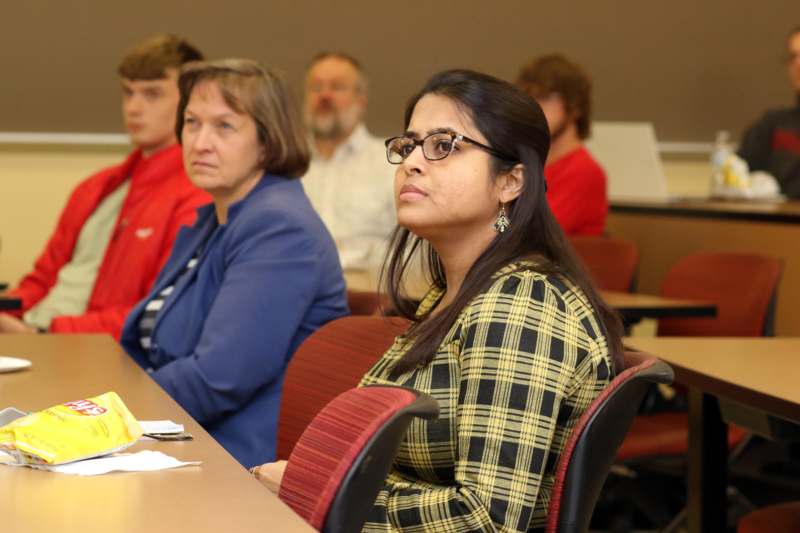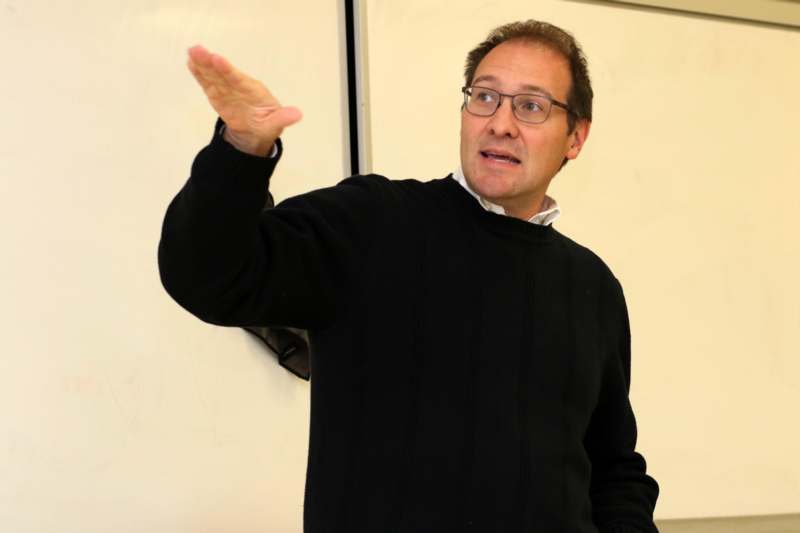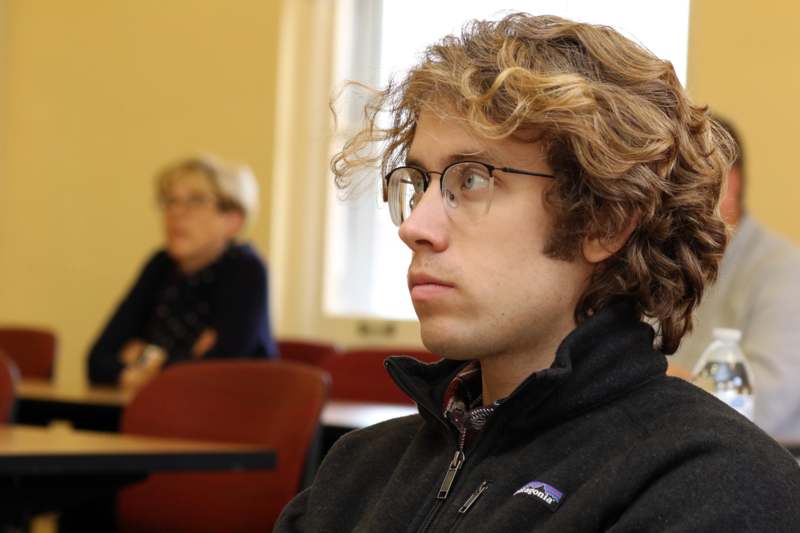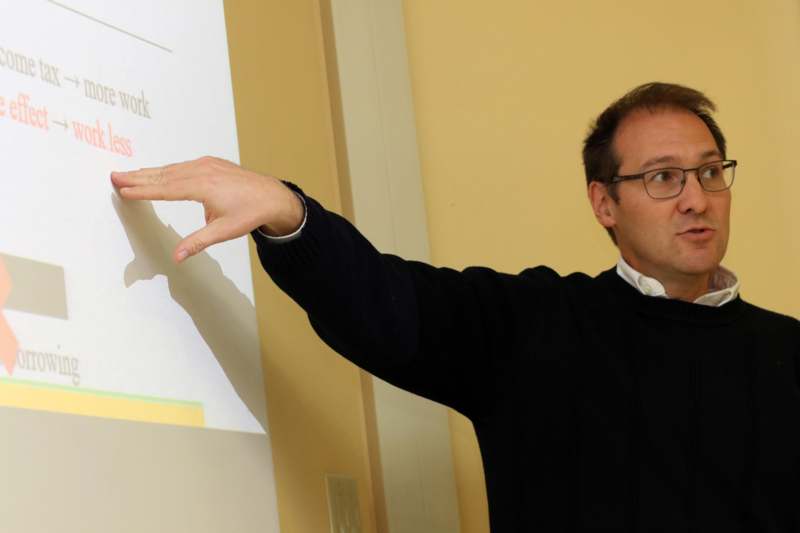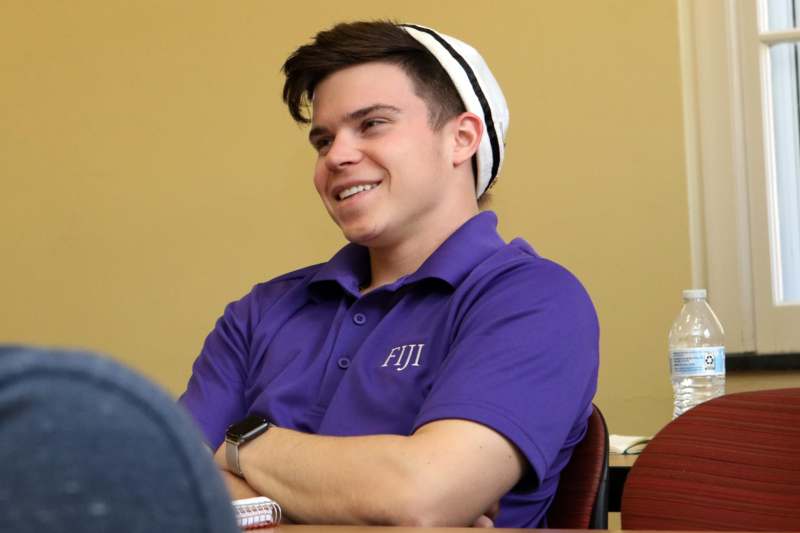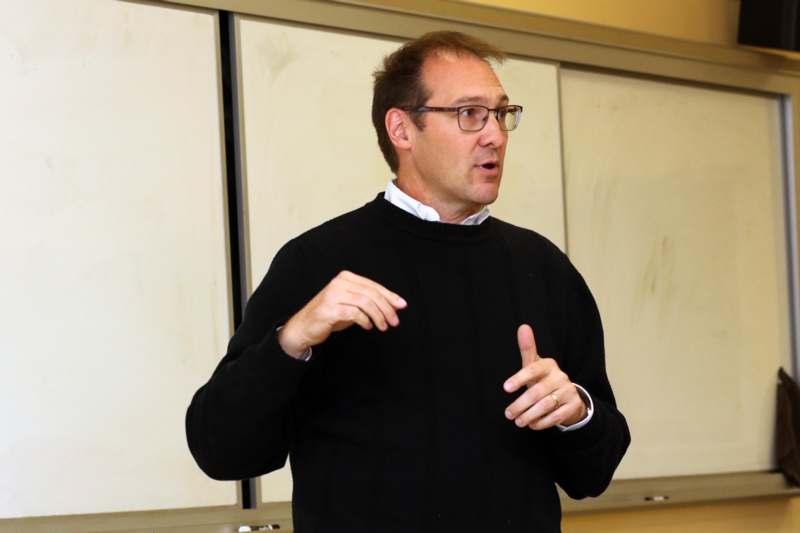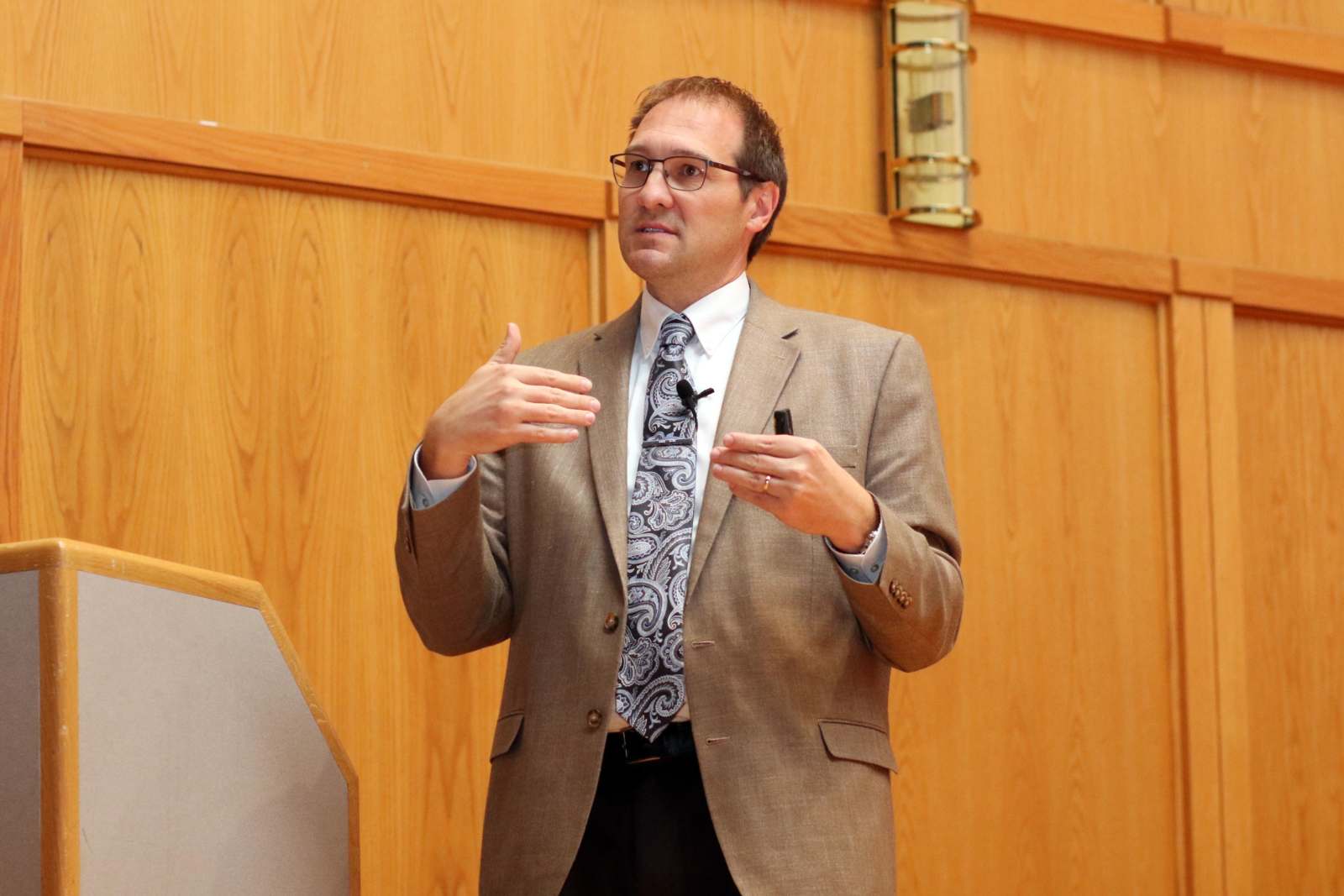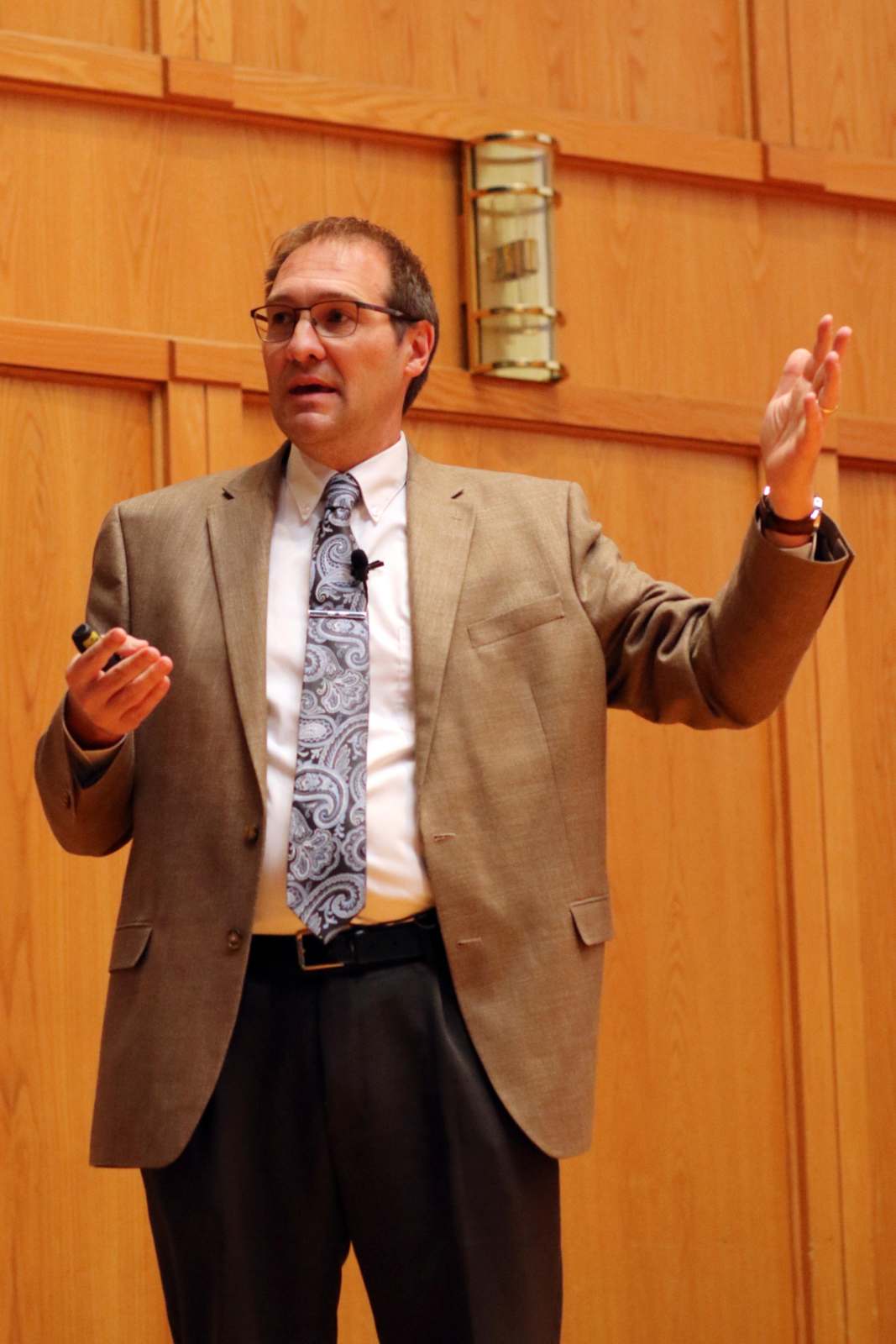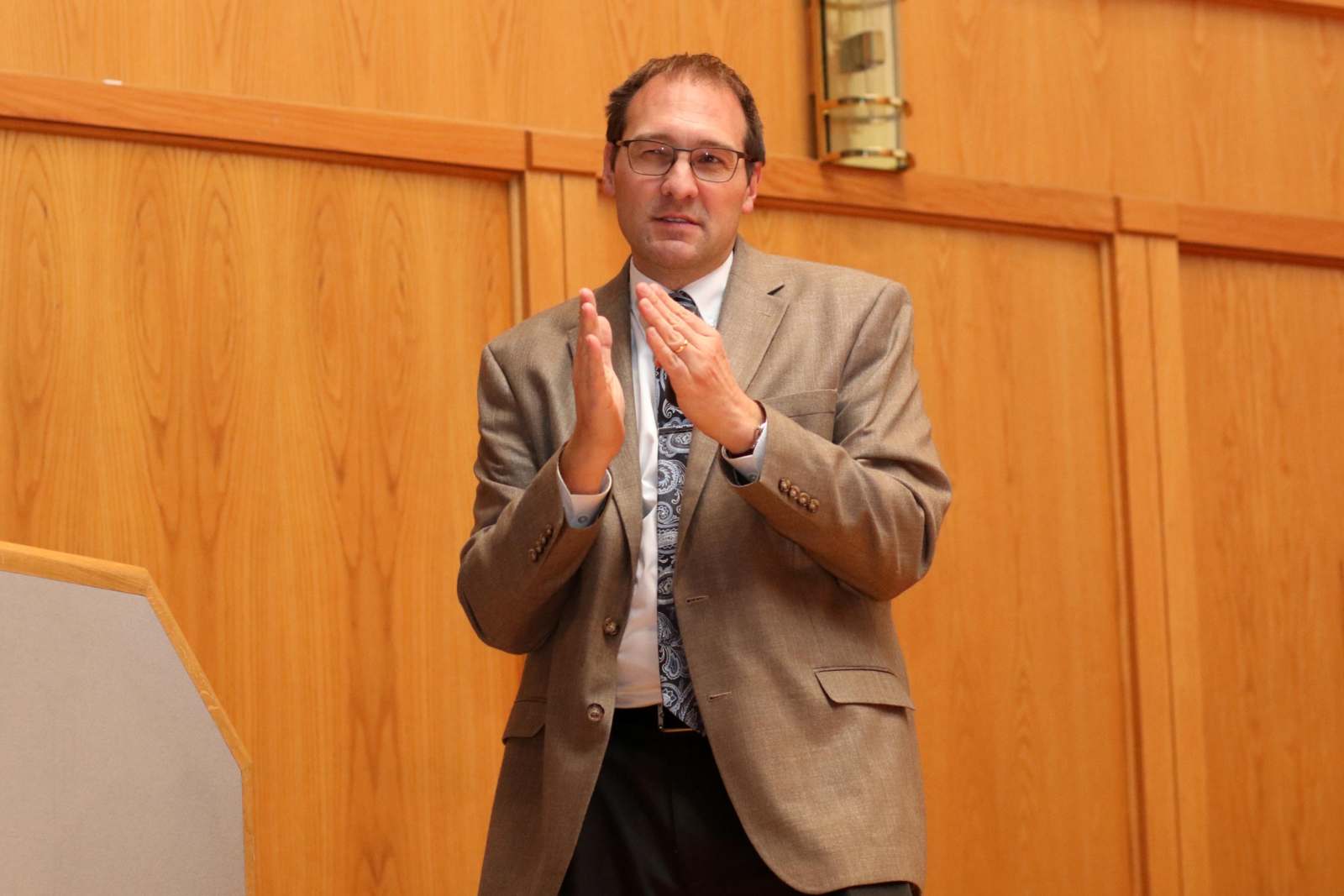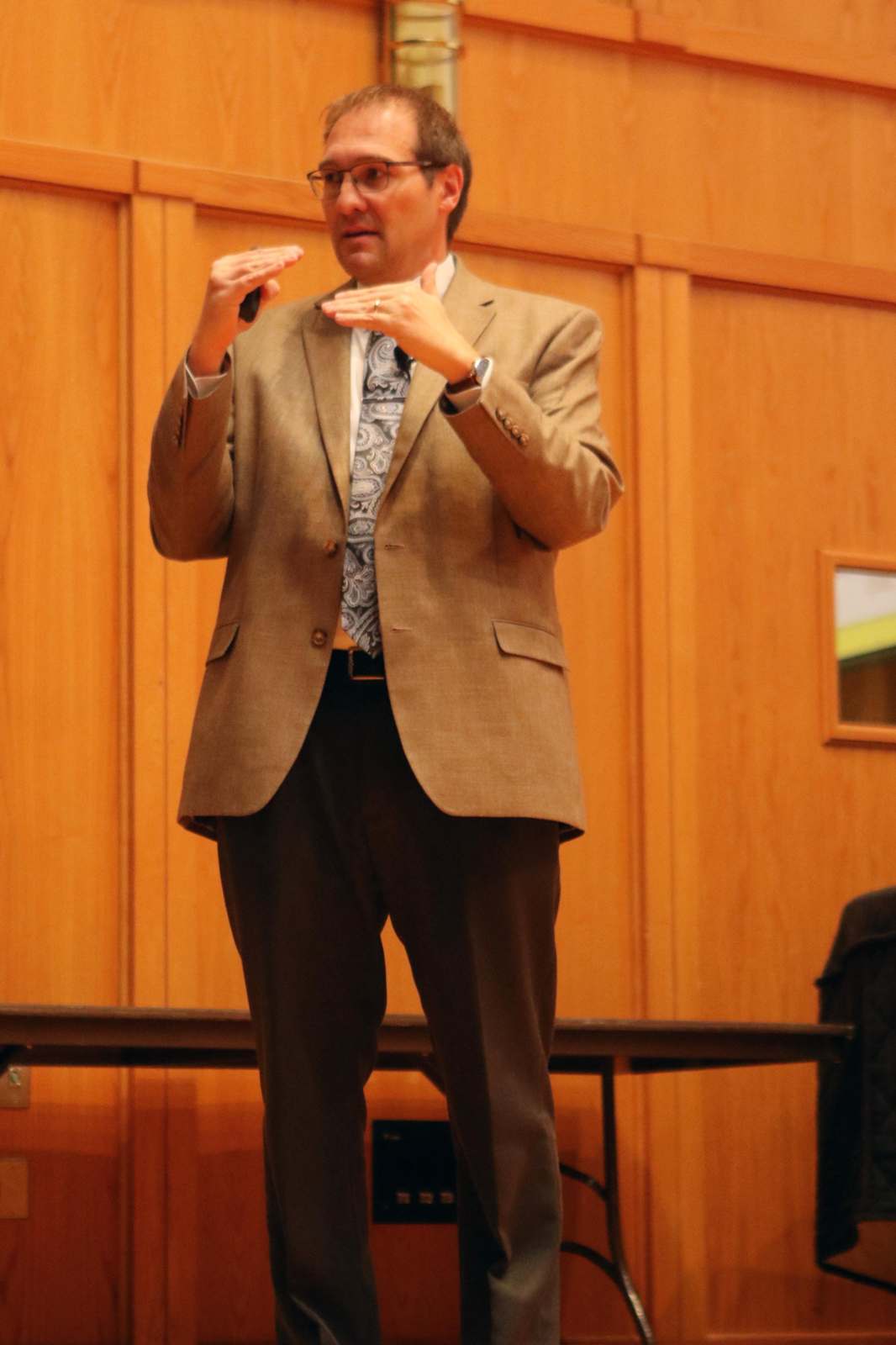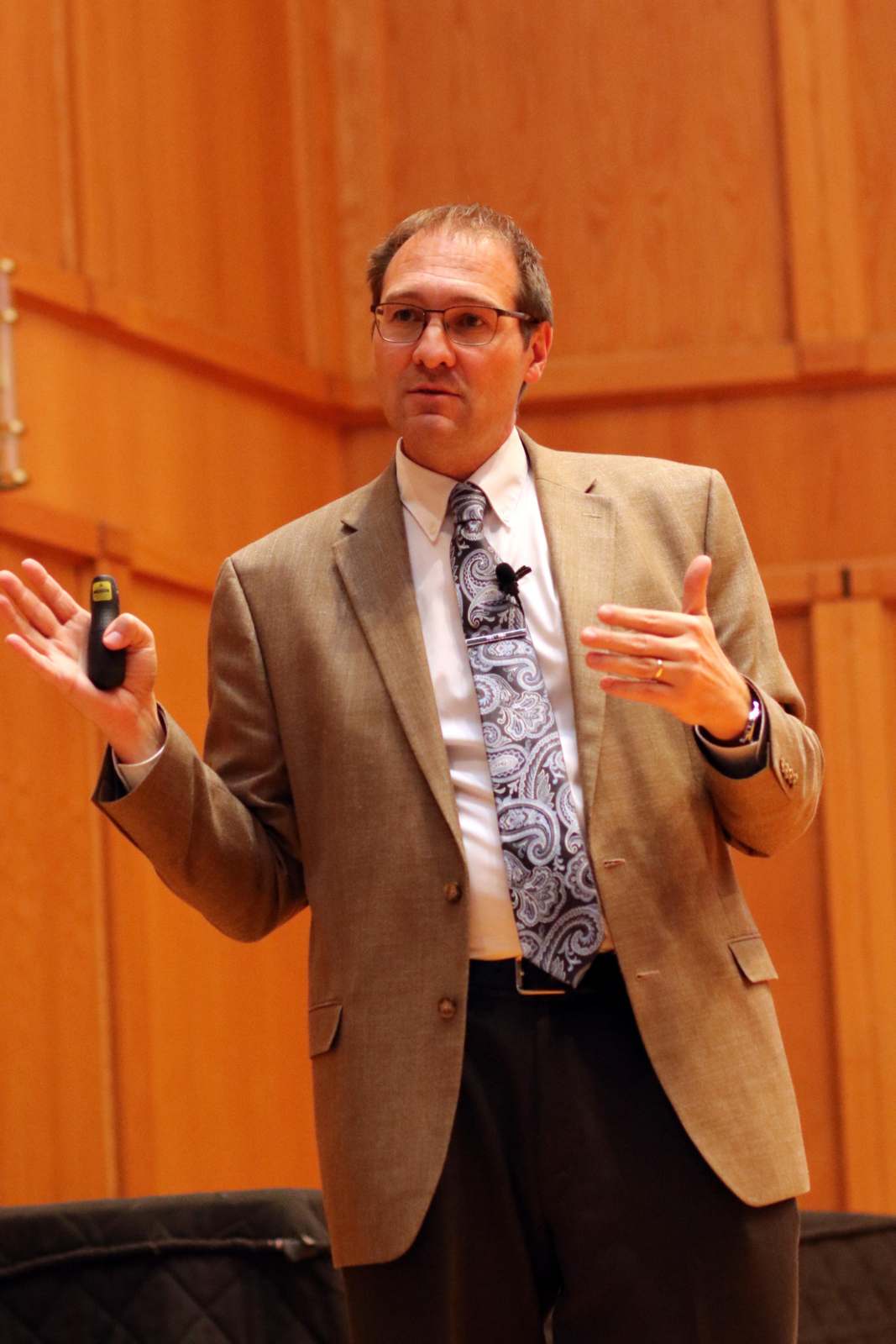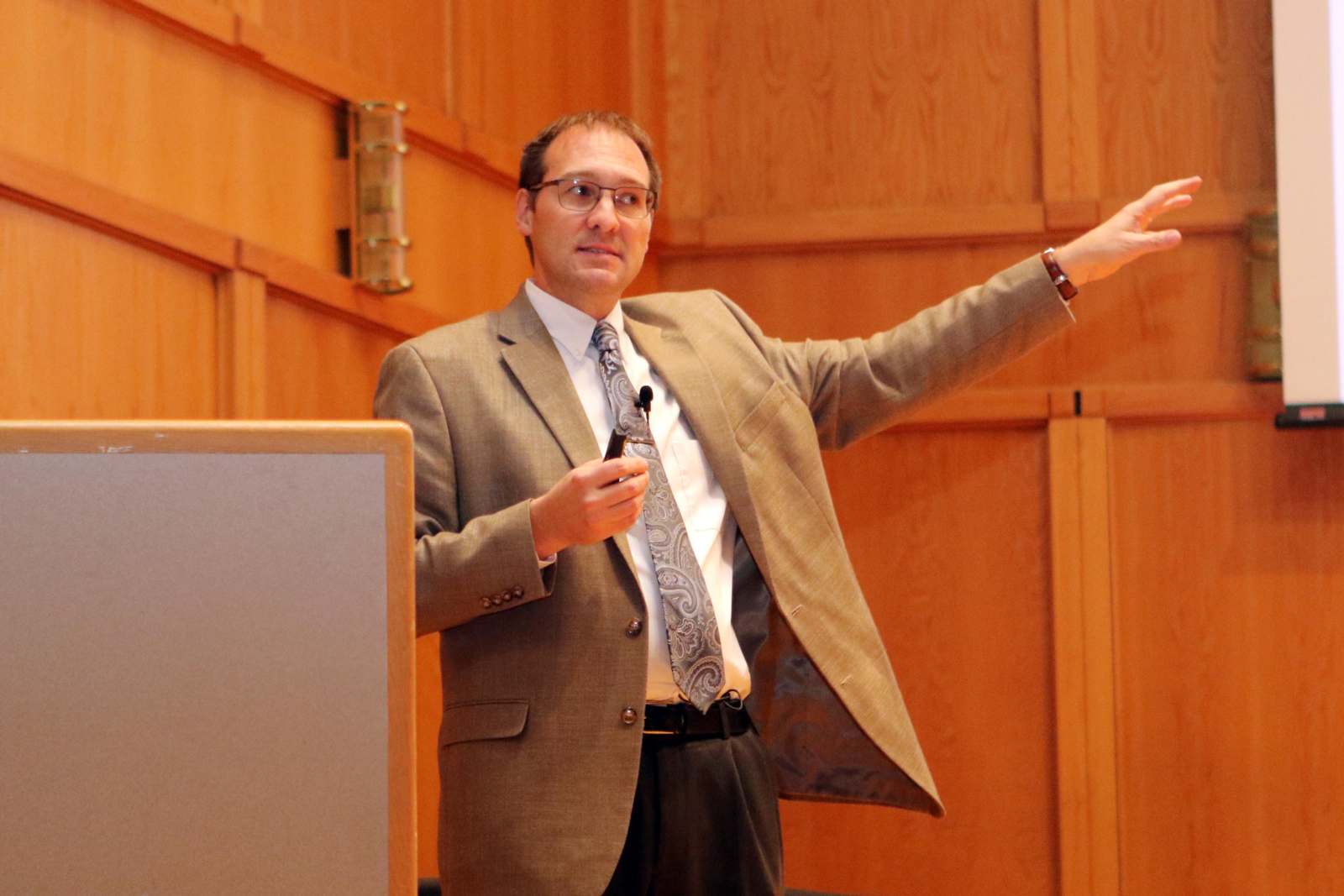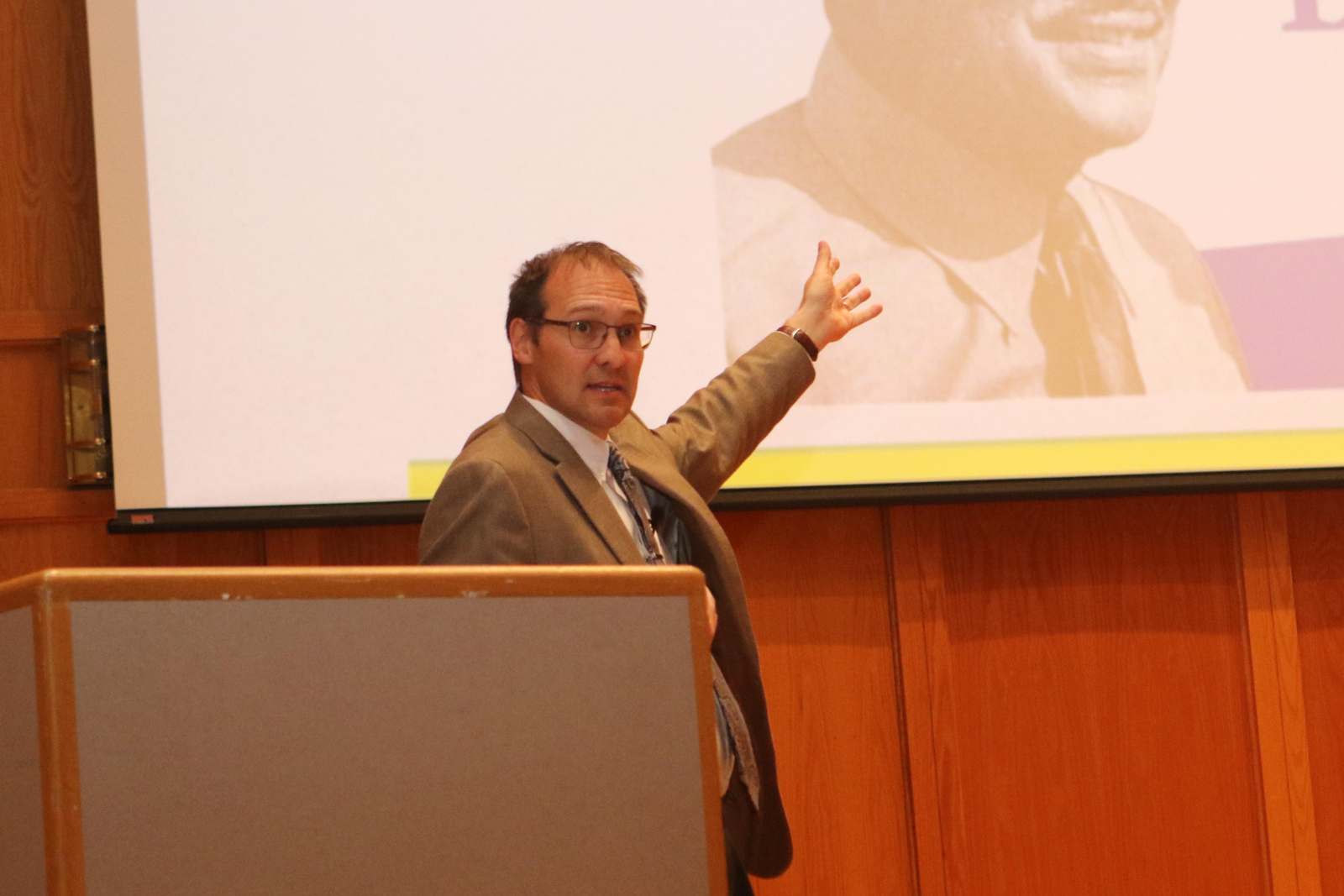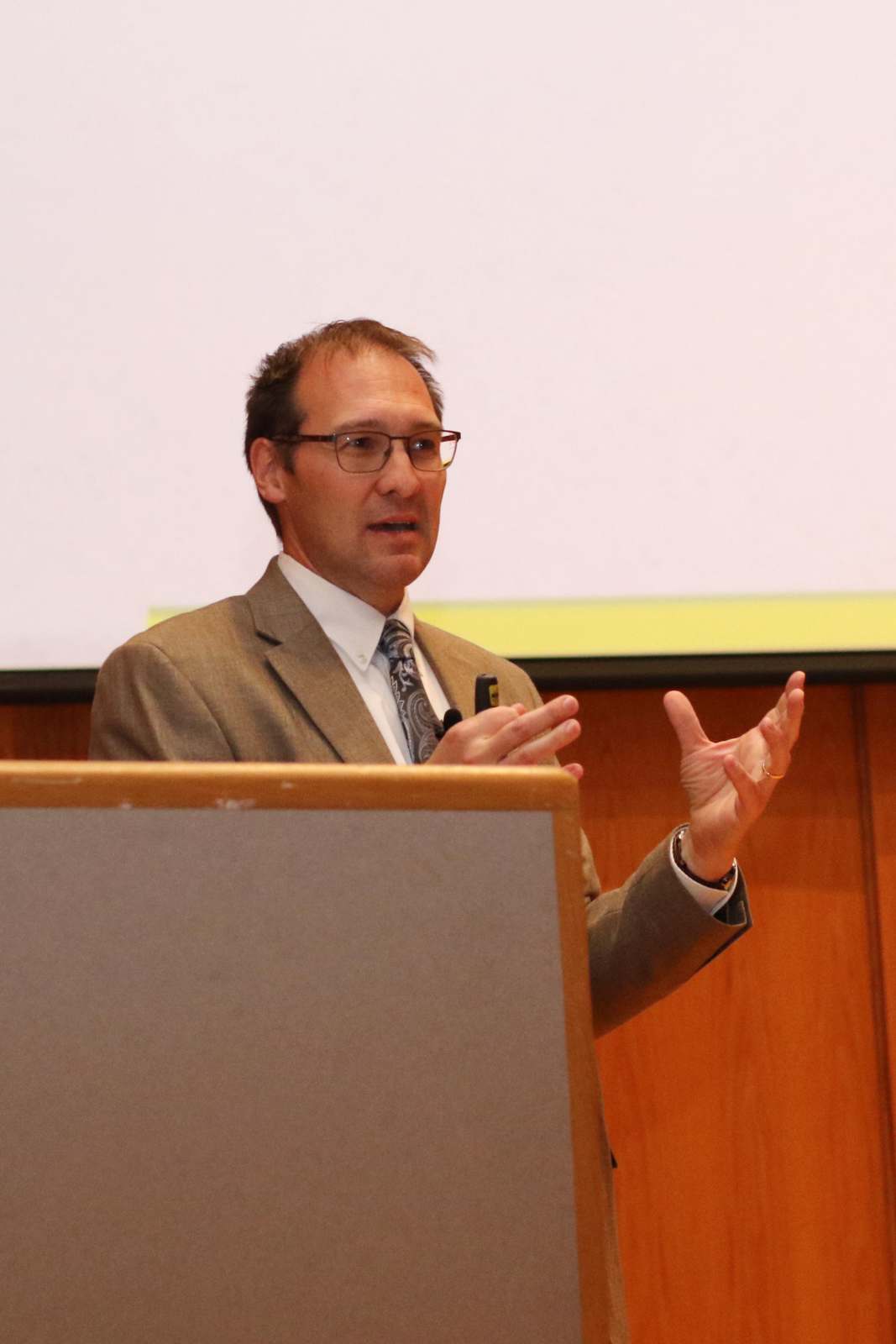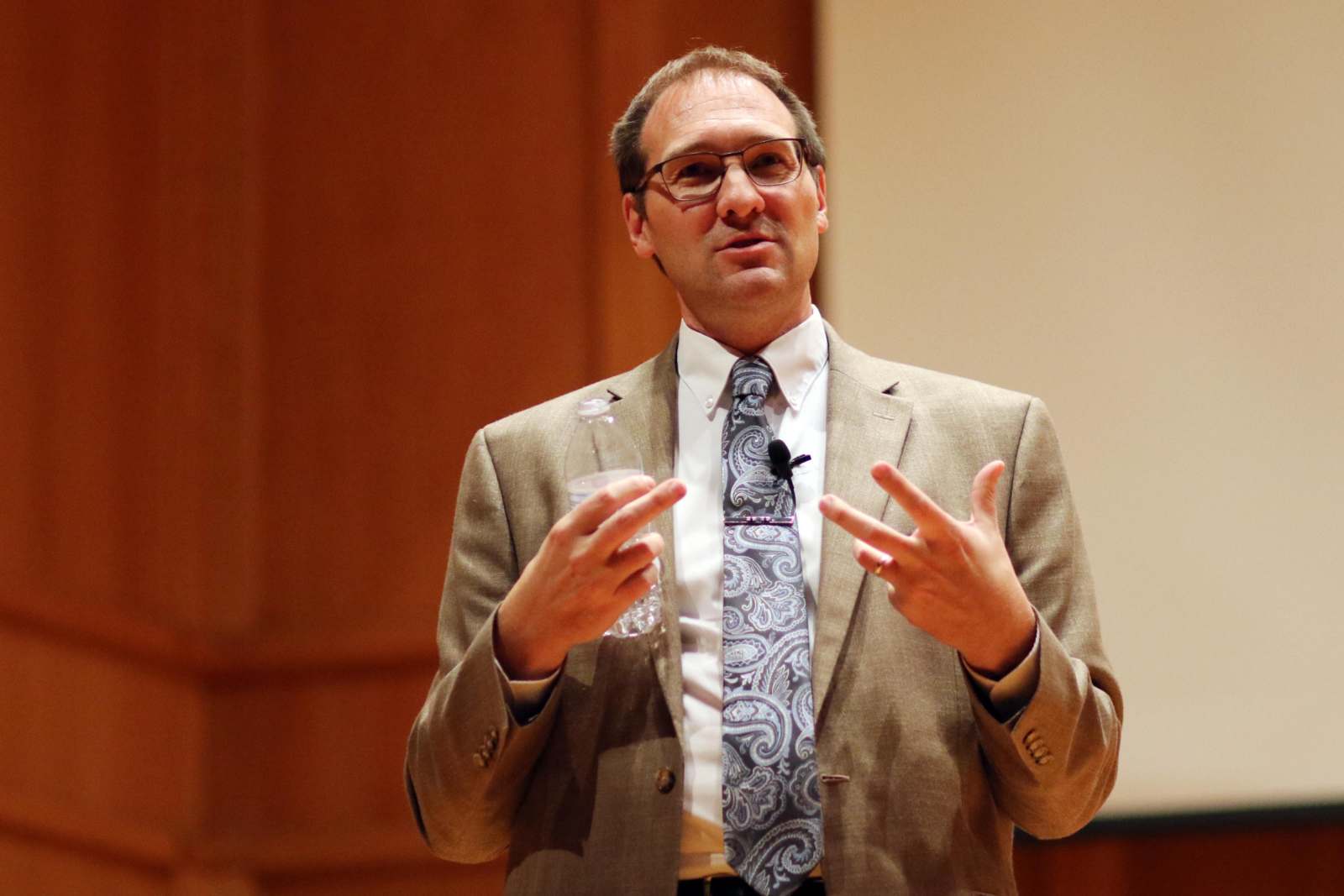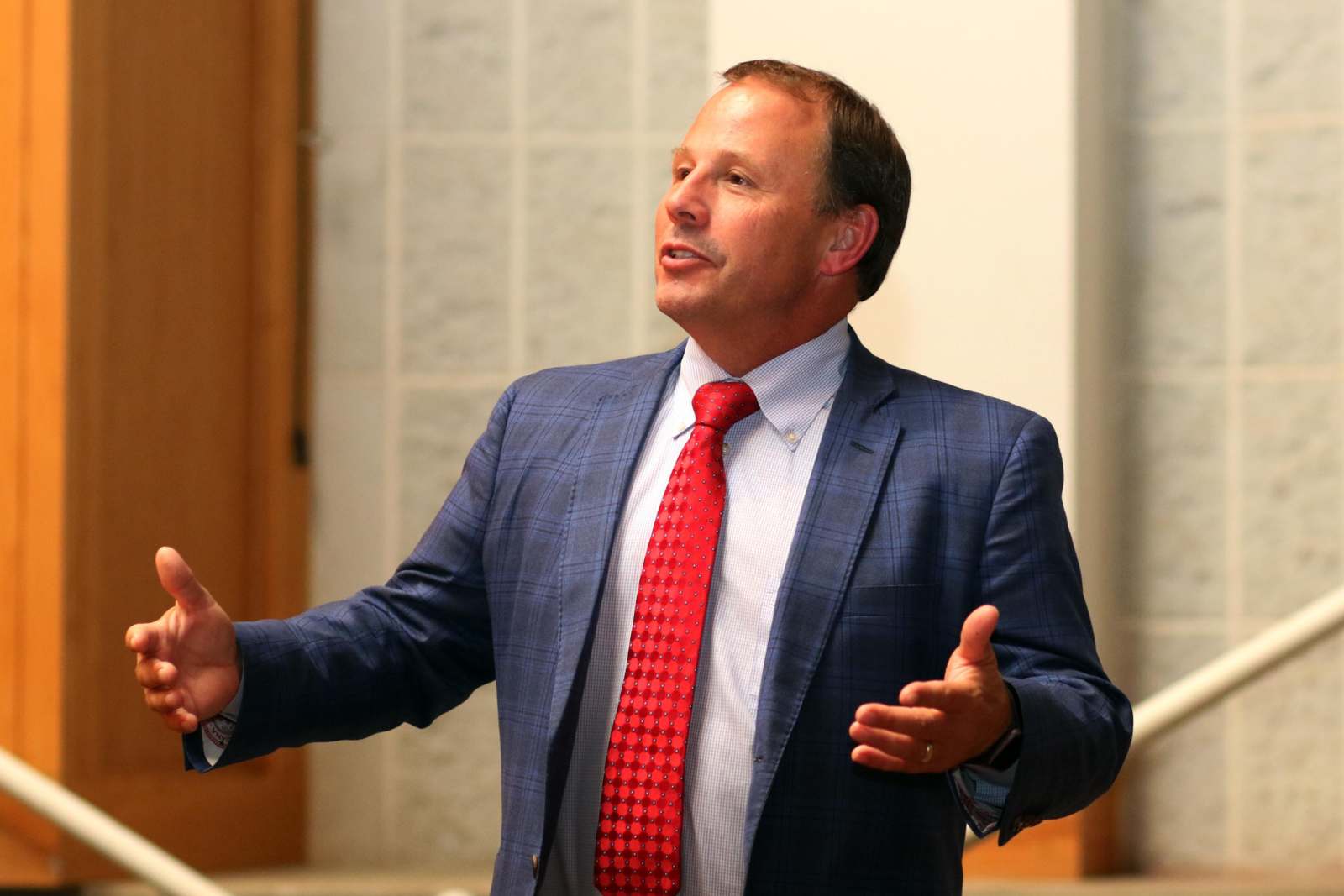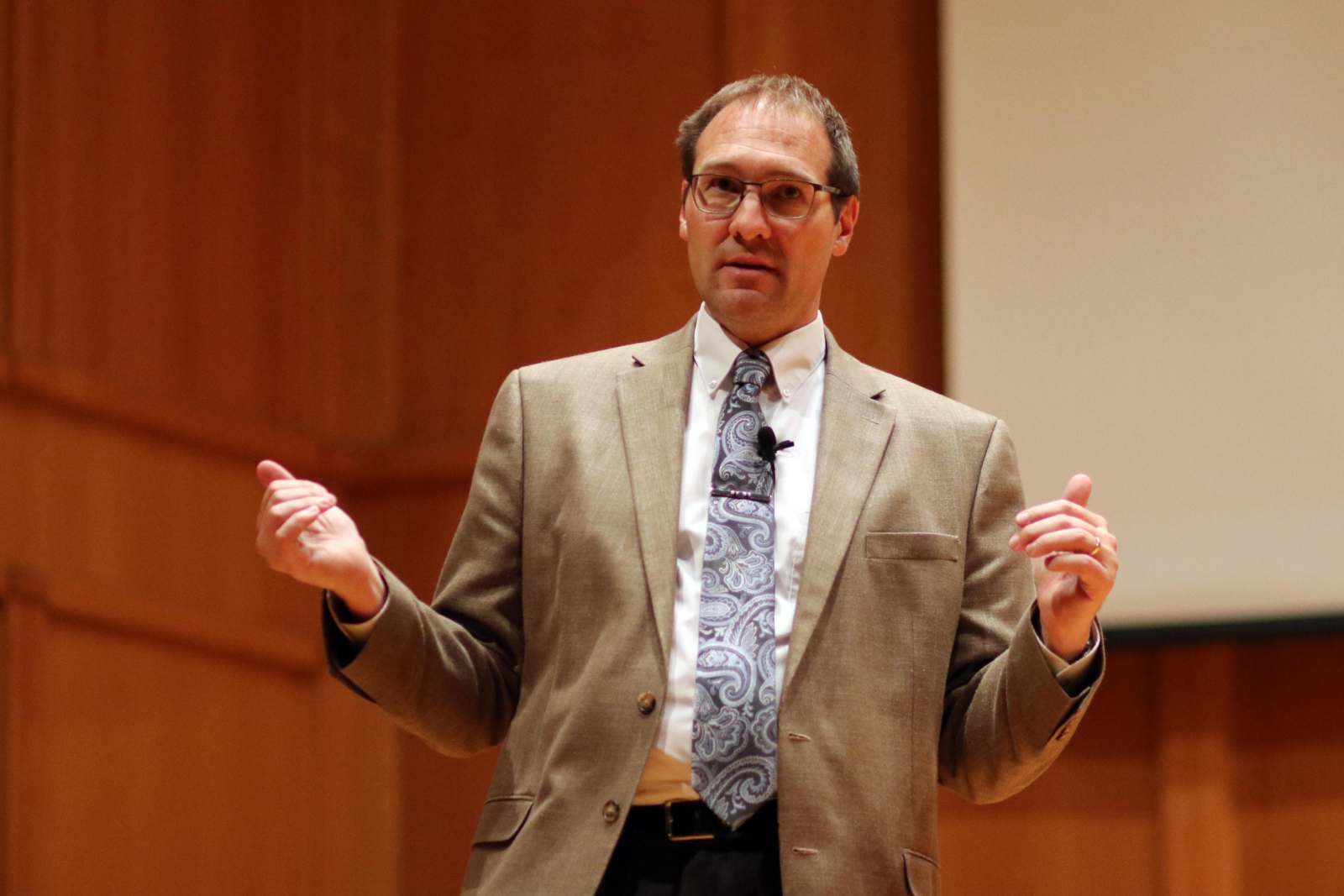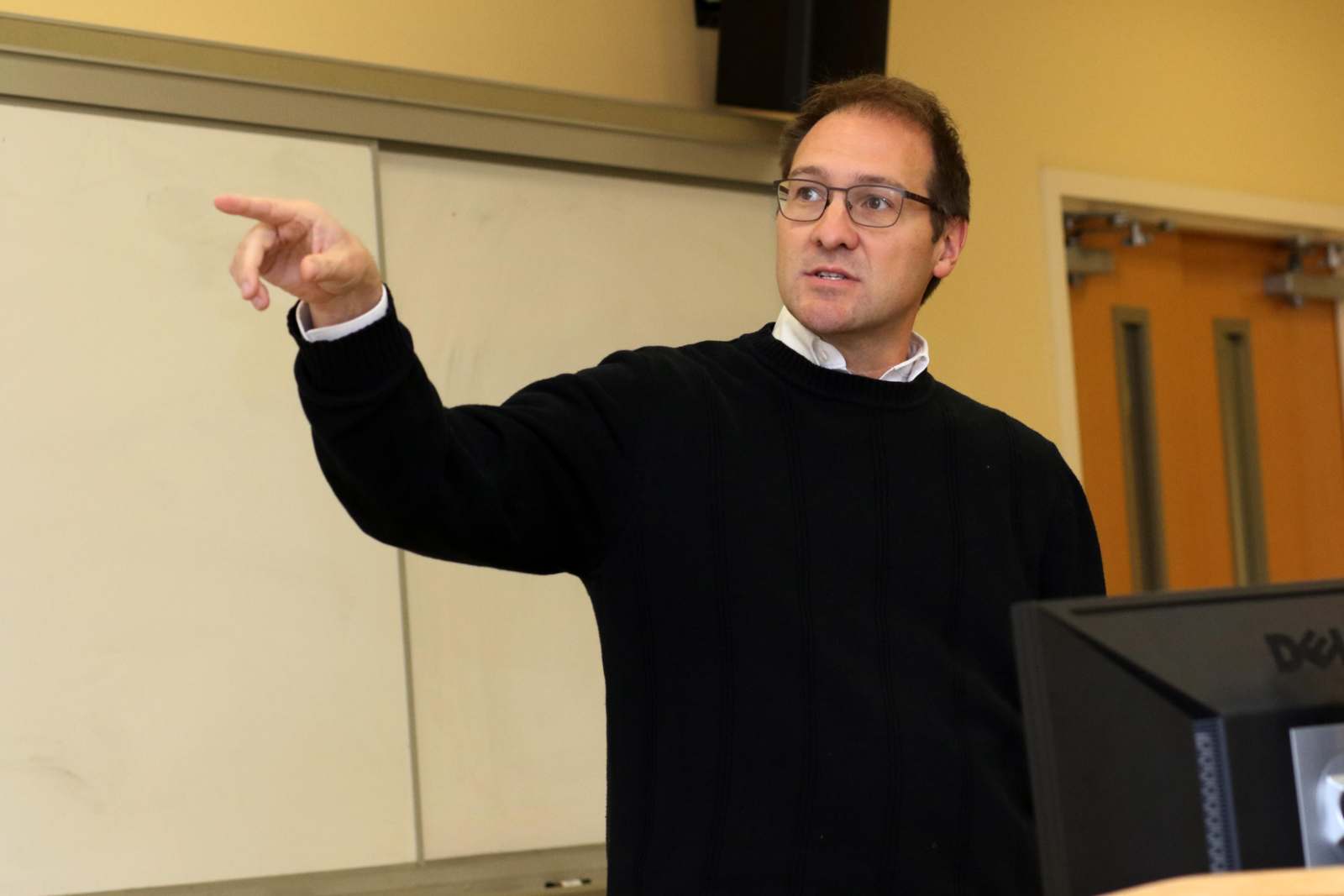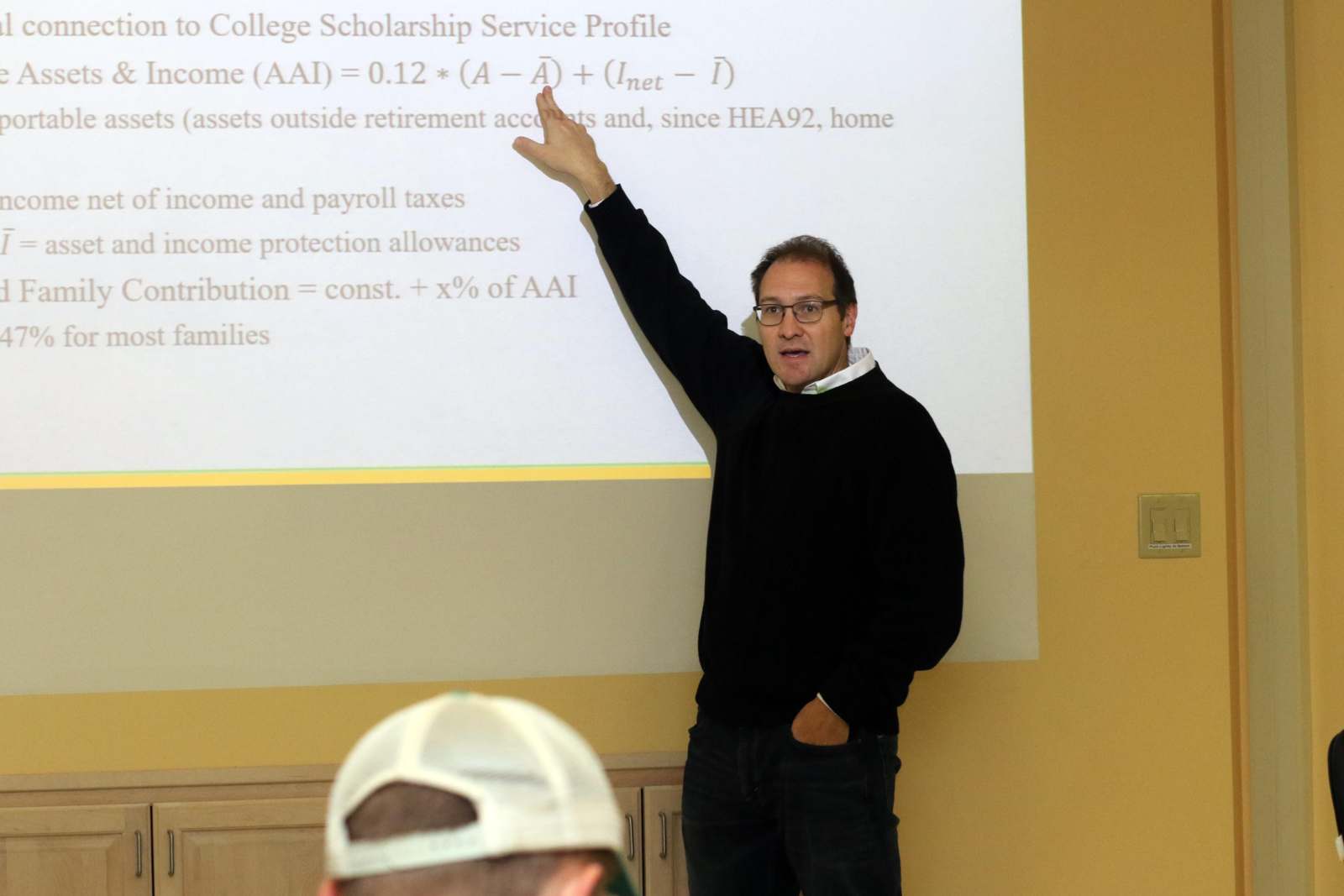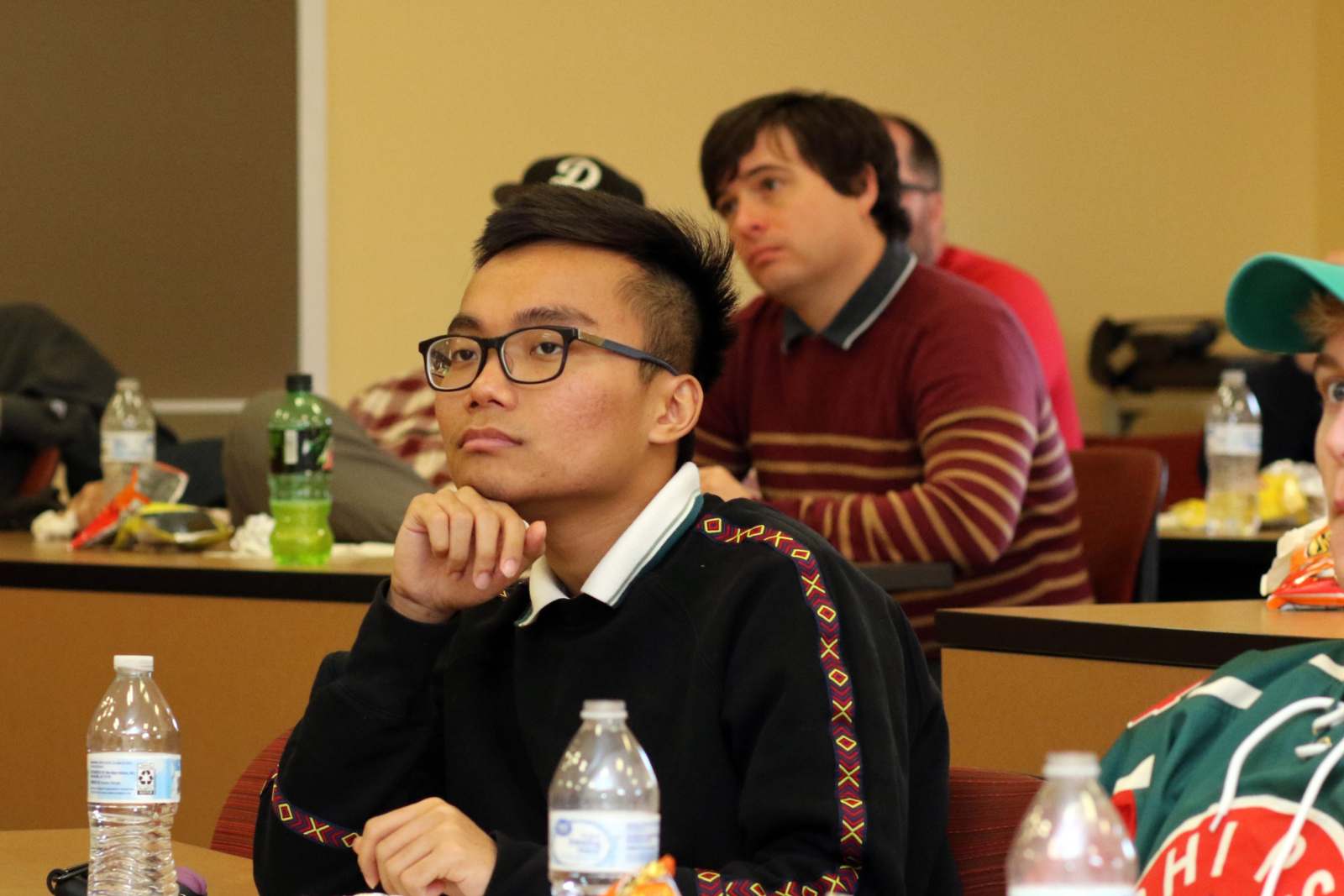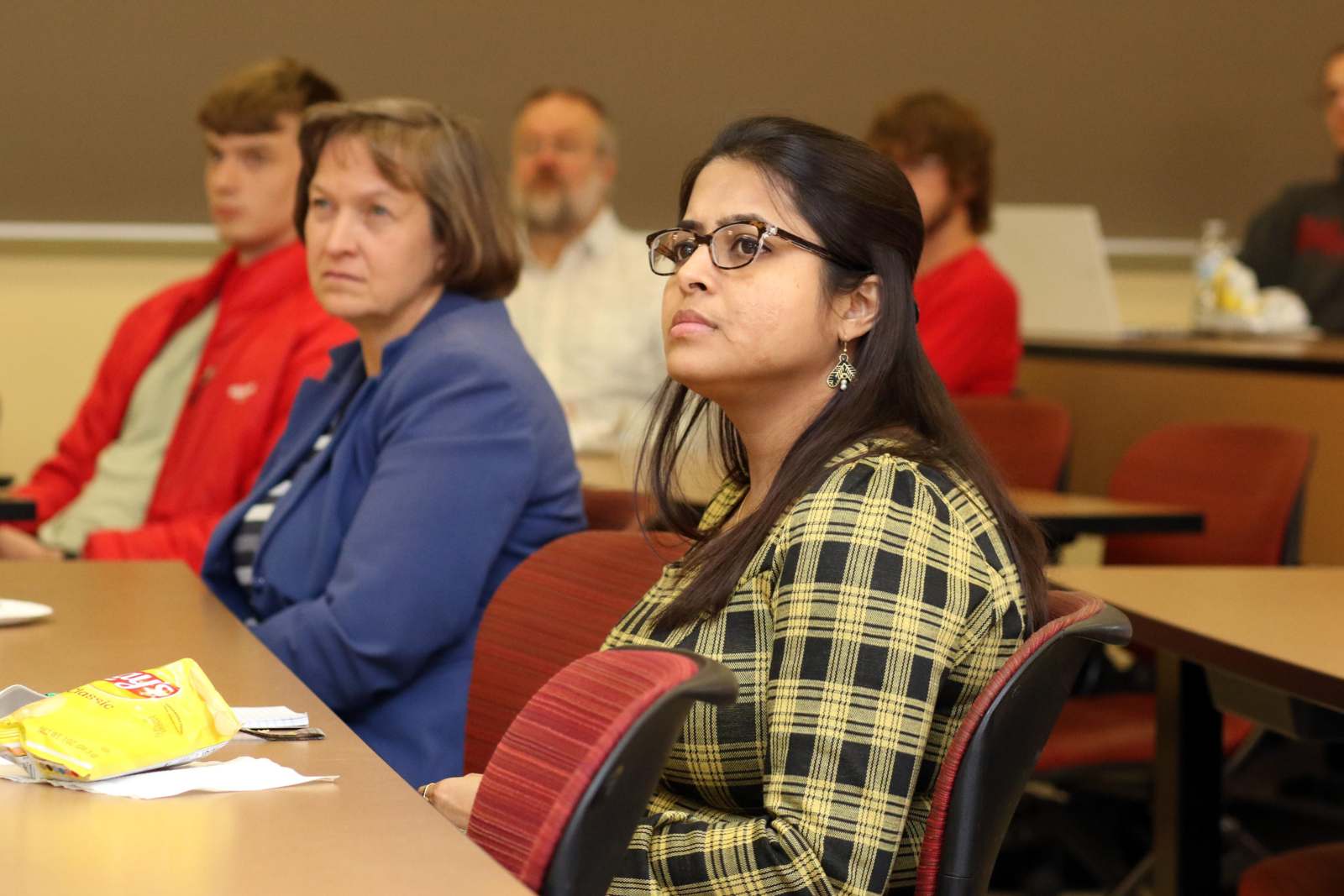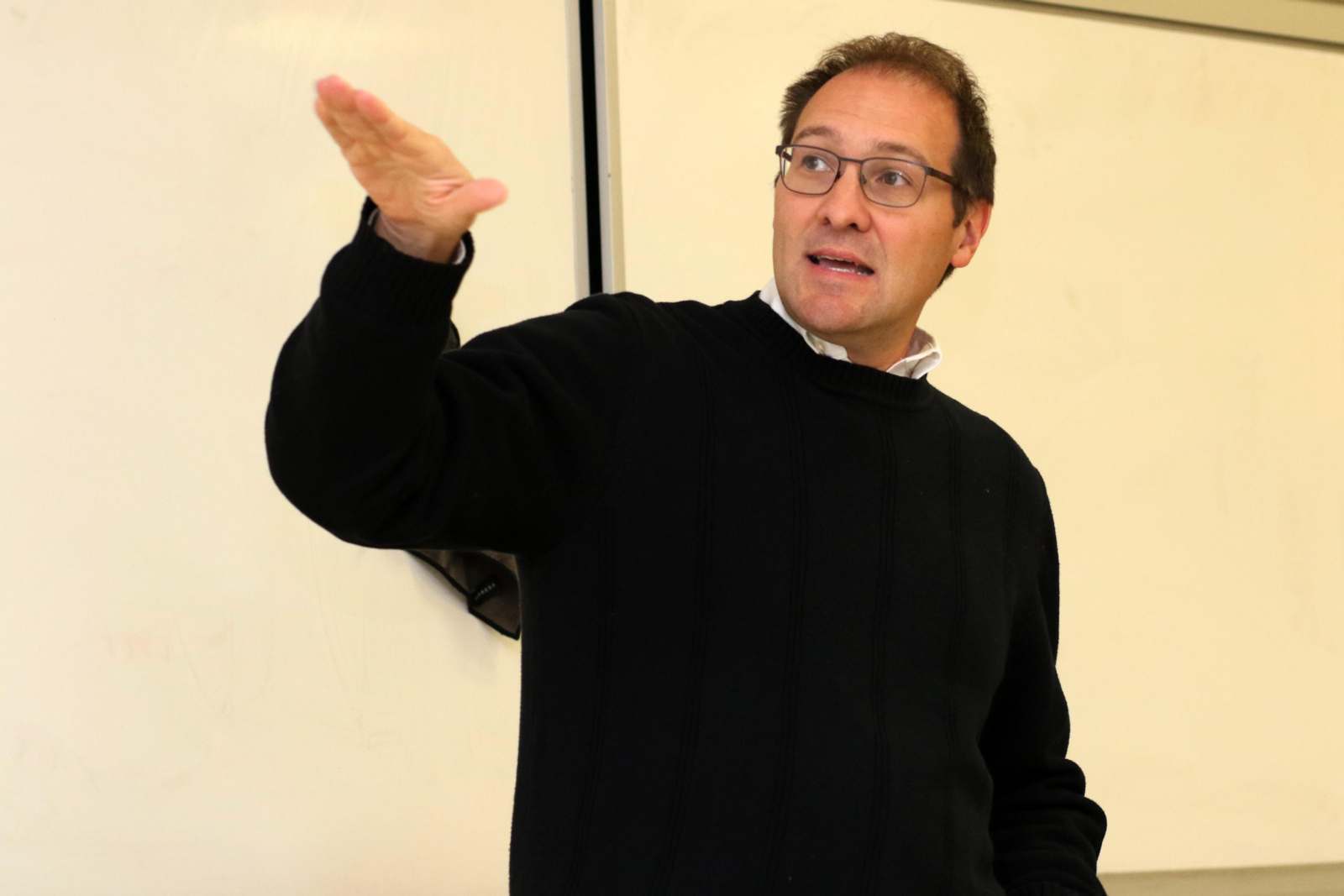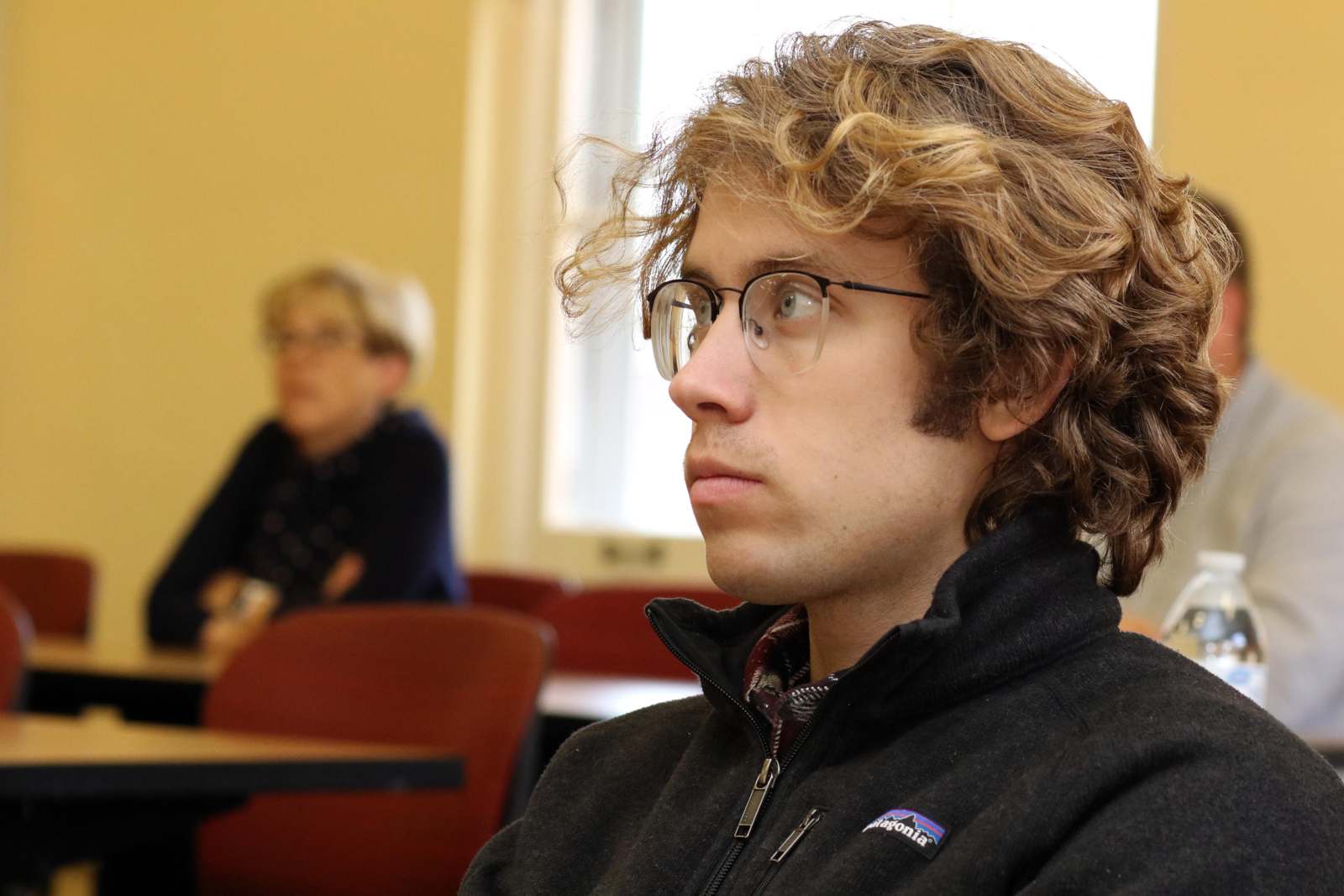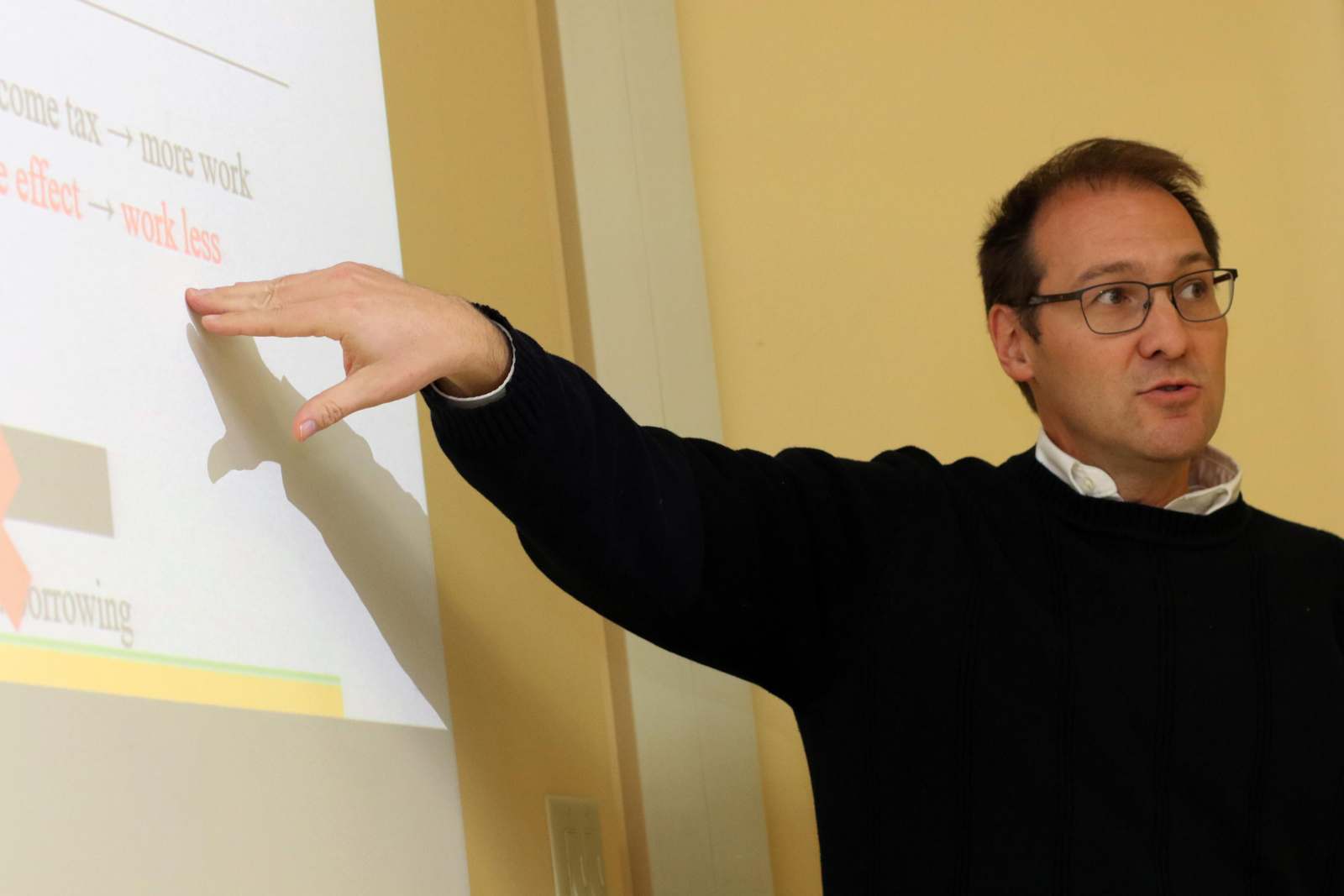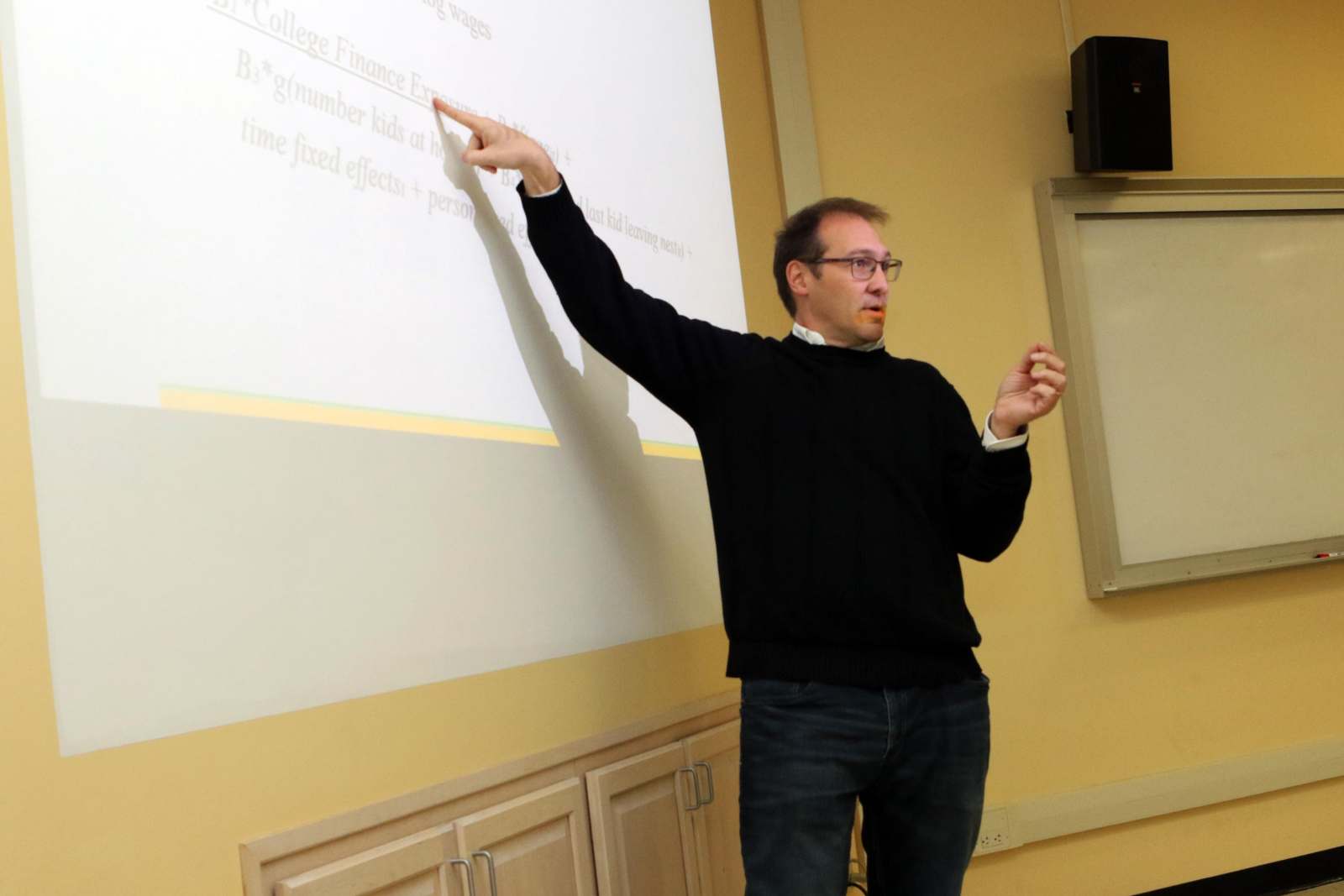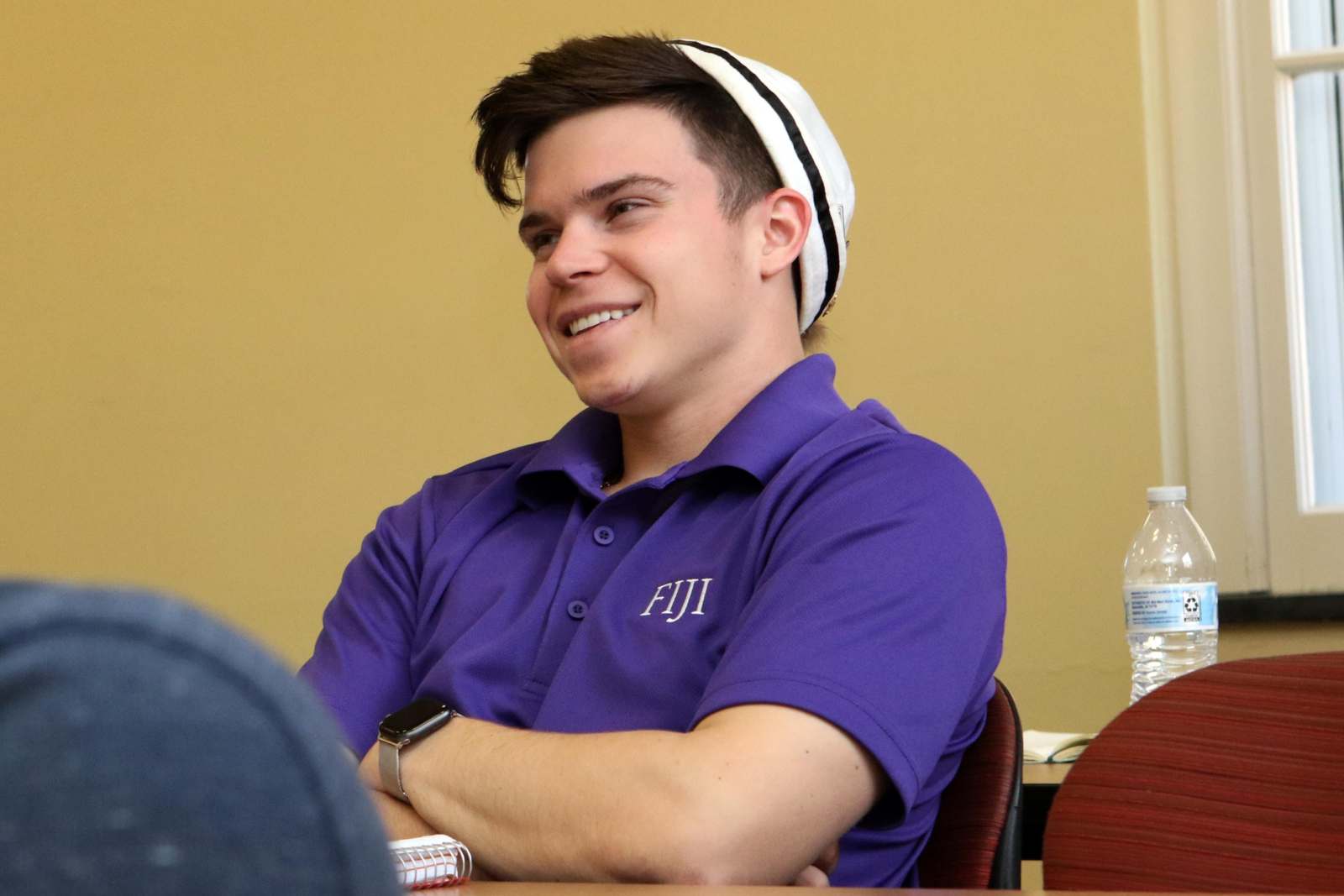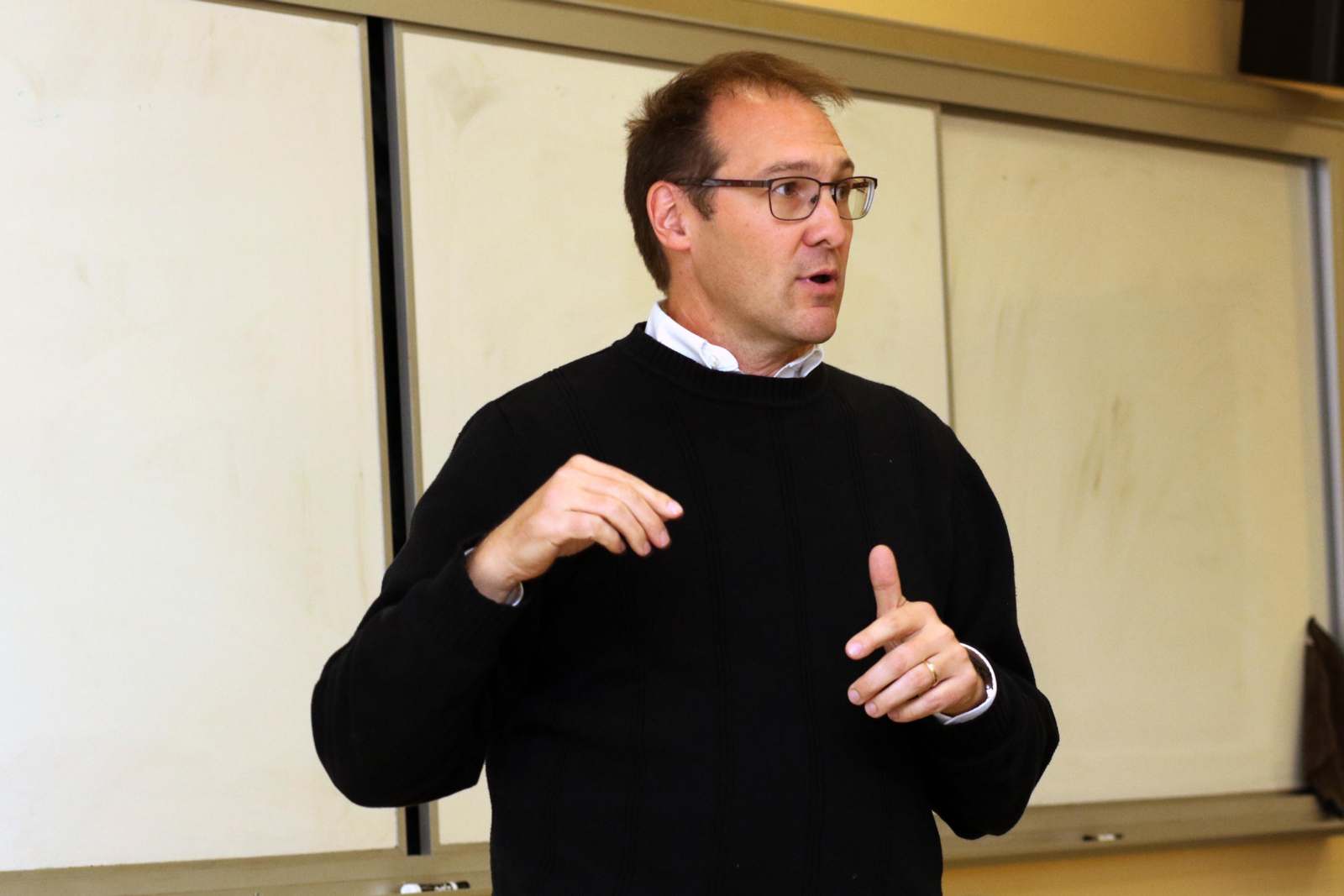PDSS Speaker Dr. Nathan Grawe, 10/20-21/2022
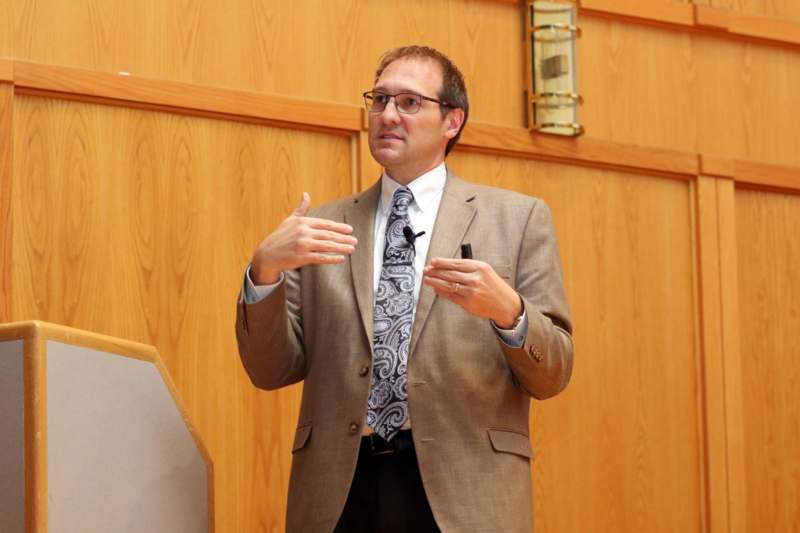
Dr. Nathan Grawe, the Ada M. Harrison Distinguished Teaching Professor of the Social Sciences and Professor of Economics at Carleton College, delivered a lecture in Salter Hall as part of the President's Distinguished Speaker Series. Dr. Grawe is the author of 'Demographics and the Demand for Higher Education' and 'The Agile College: How Institutions Successfully Navigate Demographic Changes.'
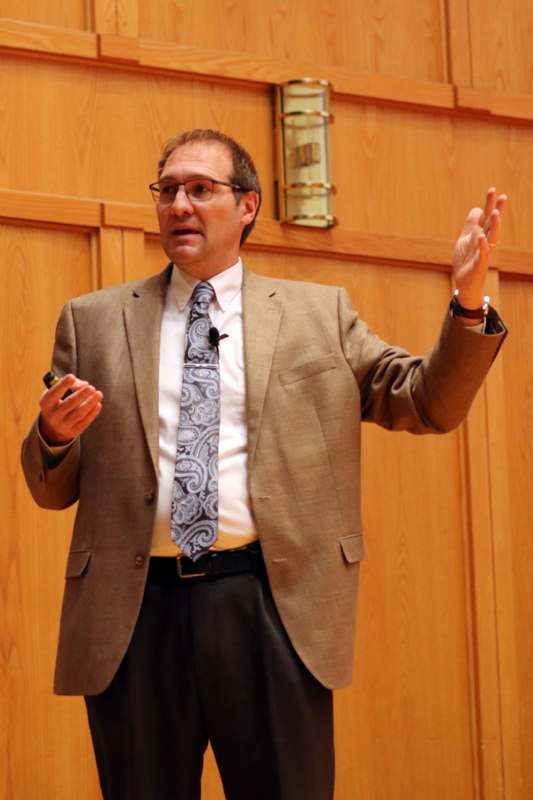
'The principal explanation is that the access agenda of American higher education has actually been very successful. The share of parents who have college diplomas has increased dramatically and will continue to do so. And parents who have bachelor's degrees are very likely to send their young people to college.'
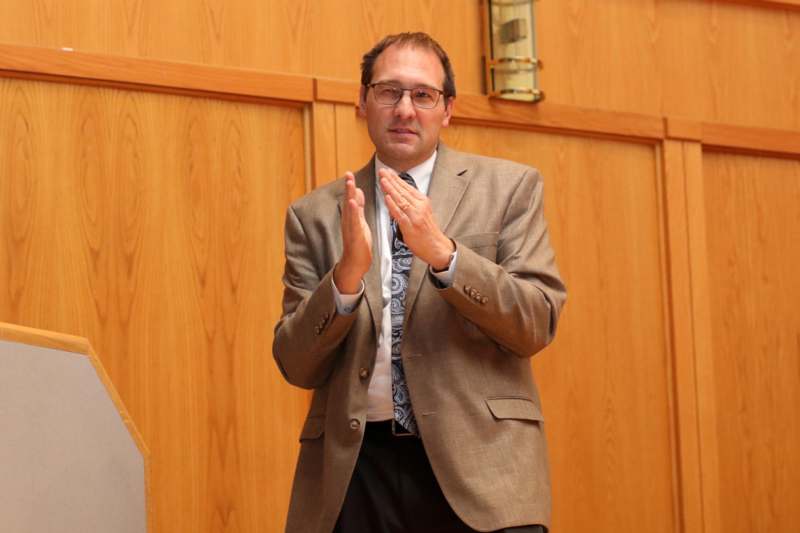
'When I think about what that means for an institution like Wabash, you obviously sit kind of right at the cusp (of elite and national colleges). In my analysis. I think there is going to be some spillover because I don't think we will see expansion at the very top in numbers like we see expansion in the pool that's interested in attending those institutions. And as those students who might have otherwise in past years been admitted are not, they're going to go somewhere. Institutions like Wabash sit in an interesting place where there might be some questions about how we appeal to those young people who don't get into their first choice, but maybe we're a better match for this new case.'
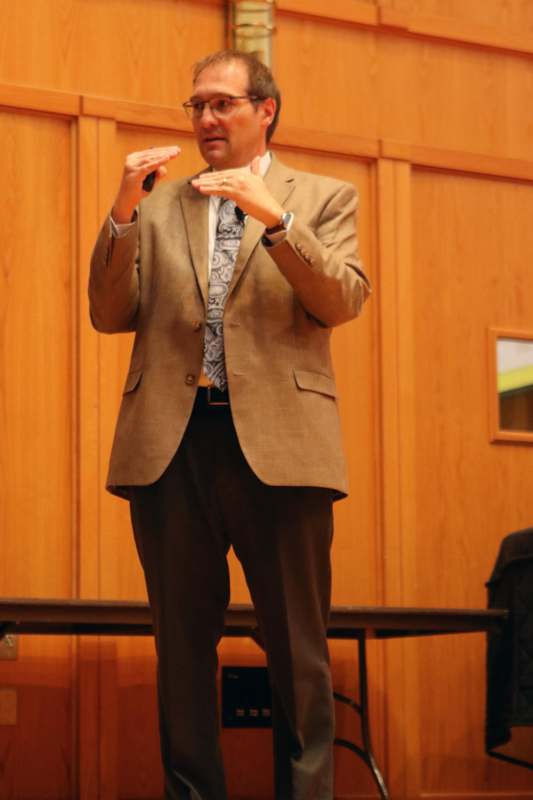
'It's probably necessary to think about these projections broken down by Census region. And here we can see, the northeast quadrant and the midwest have had low fertility rates to such a degree that even now they're on the downward slope. That helps make sense of the bias that we see in the Chronicle of Higher Education and Inside Higher Ed about mergers and closures disproportionately. It's happening at institutions that are in the northeast. That's because we really do see already declining pools in those areas, while the south and the west are somewhat stronger.'
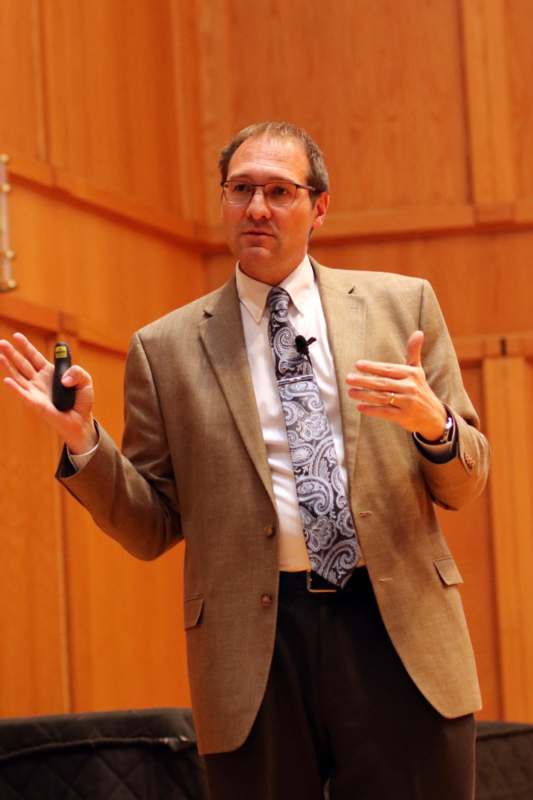
'Those top 50 colleges and universities actually become more diverse in part because of a larger share of Hispanics in the population, but also a share of Asian American students. Diversity doesn't assume similar rates at all institution types. By region, the midwest is a less diverse region than say, California. In California, the population is going to diversify more slowly than here in the midwest. California already serves a more diverse population right now, and the midwest will do some catch up. And we're going to see that at a faster rate, so that by the end of this time period, the differences between regions will be projected to be smaller… We are moving in this direction and we can face a future that’s going to be more diverse than we see today.'
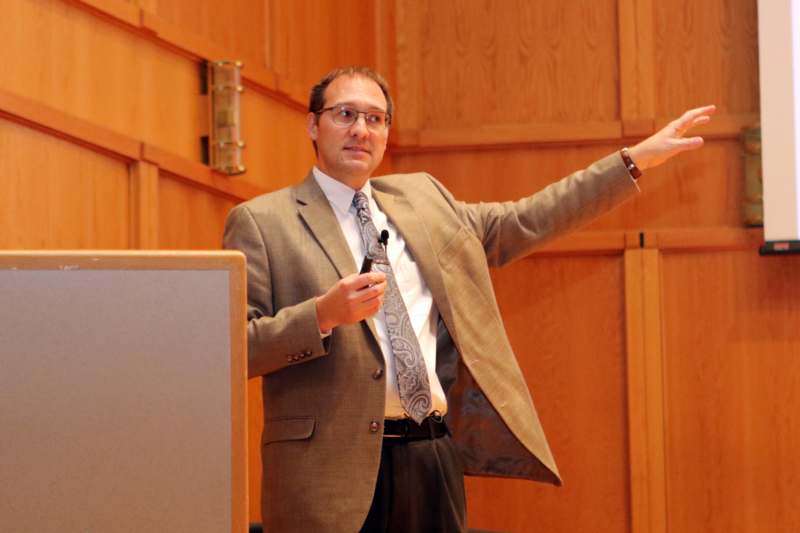
'It merits pausing and saying, 'Well, okay, we've got to do something different in the future if you're going to continue to thrive.' But the good news is that higher ed is already responding. We do not have to look at those projections and say, 'Well, that is our future.' That's a projection. If we continue to behave the same way we have in the past, this might be our future. But why don't we think about how we might be different?'
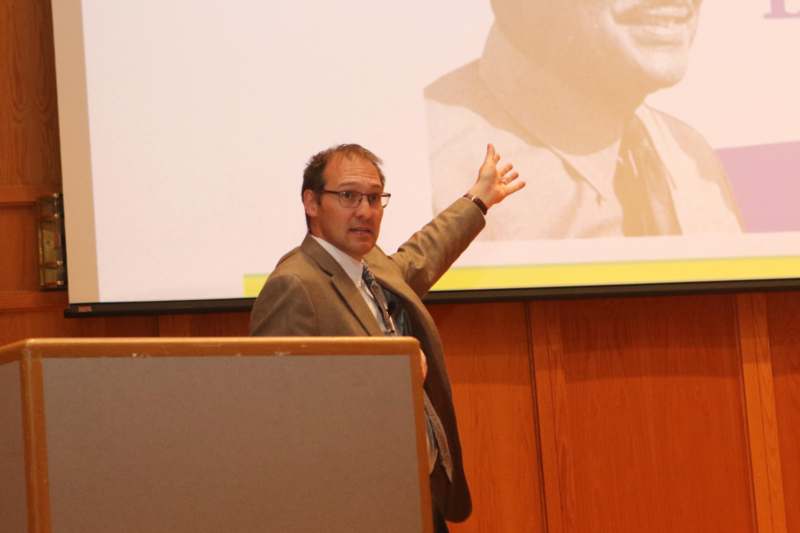
'As we think about reaching out to new student groups, how has this changed the way we operate the classroom? How has it changed the way we operate the registrar's office? What do we need to do differently in the dining halls so that we can become a home for four years for this different student group? How can I tap into the strengths that these students bring? It's going to be a lot of thinking about what these new students bring to the table, so that we can be the best college for them, so they can really make use of the diverse experiences that they bring into my classroom. Some of this might mean we have to re-envision who we are, we have to re-examine our own self-identity. That's hard work.'

'Life-after-college talk doesn't have to be about STEM or business…We want to think about real-world problems like environmental degradation and come up with unique, humanistic solutions. It's a great way of prompting students to understand and to see how all those courses they take actually do prepare them for what comes after. I suspect those (STEM or business) students are going to be much better articulated to potential employers. This liberal arts student took some history classes and some economics classes and some science classes. Why should you pick me over the person who has served a pre-professional approach?'
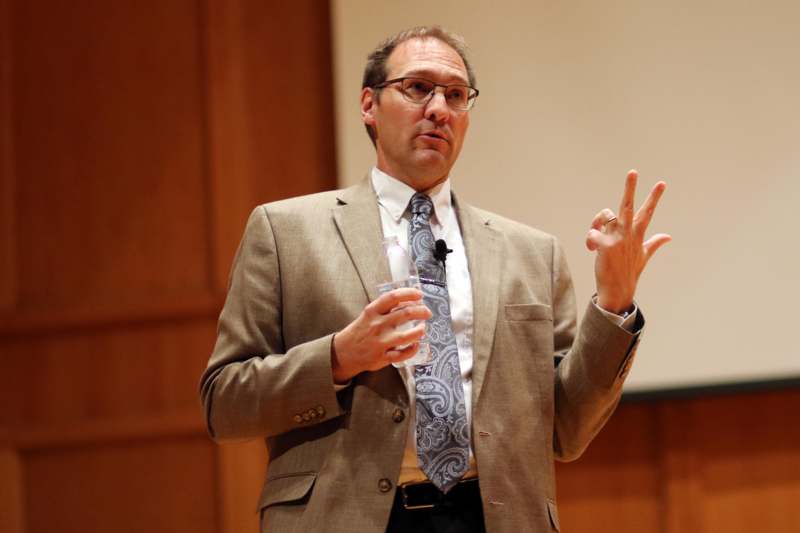
'It's interesting to think about the COVID experience by accepting that virtual opportunities might open up partners beyond our geographic limitations. At Carleton, we can play around with shared faculty teaching courses. There's some good things with that, but there are also some challenges. I think it's interesting to partner. We're not going to become an online education school, but can we share faculty with Davidson or Wabash or more with all of the above where some of the classes are in person maybe some of them are hybrid in order to create new programs that we are unable to do otherwise.'
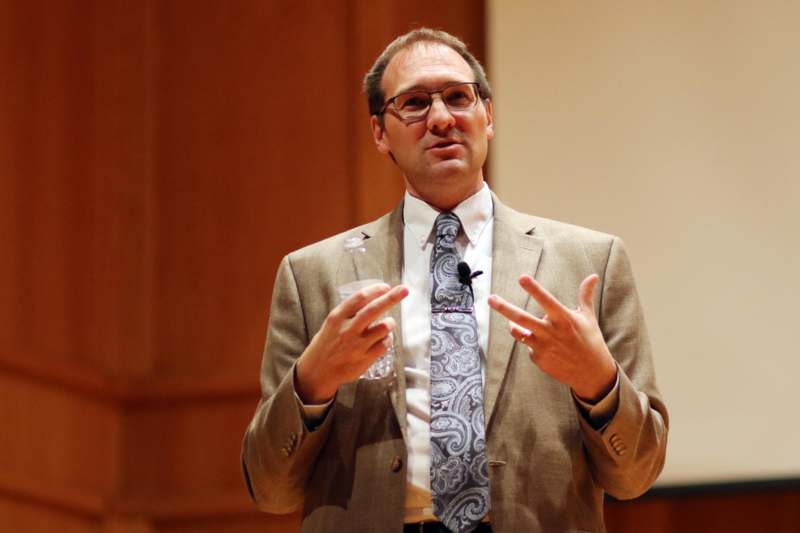
'(on the responses of systems to stress) Many of us think about two responses to stress. The first one is rigidity, that we break, and we recognize that is not good. We often run to resilience or robustness, like a turtle pouring into its shell, I might hope that the stress is just going to pass it over. Maybe I can come out on the other side unchanged. Admittedly, sometimes robustness is not bad. That's all you can offer. But there's a third possibility, it's actually more optimistic. And that's anti-fragility, the anti-fragile system gets stronger when put under stress. My doctor tells me I should work out. So, I do it, but my runner's high is my stop. Why do I do it? I do it because I'm putting myself under stress in the hopes that I'll come out the other side stronger.'

'I think about higher education and to your 200th anniversary in a few years, maybe a little bit beyond, and, honestly, I'm not hoping that you all will look back and say, ‘Well, the last 15 years were a good ride.’ I think it's going to be a little bumpy. I think it's going to be a little challenging. There might be some difficult choices to make. But I hope you, and we, can say, ‘Look, we've expanded access. We've made clear the relevance of a Wabash education to what comes after life in college. Maybe, we have addressed the issues in financial aid, and so on, to make this affordable. We've improved student success and retention. We've revamped some curriculum to make them more connected to our students' lives. It wasn't an easy run.’ But was it worth it? Because now we put the institution on a foundation that will survive for the next 100 years. The anti-fragility framework is the one that I prefer to think about, I hope that you all will join me. Frankly, I think I already see it here at Wabash.'
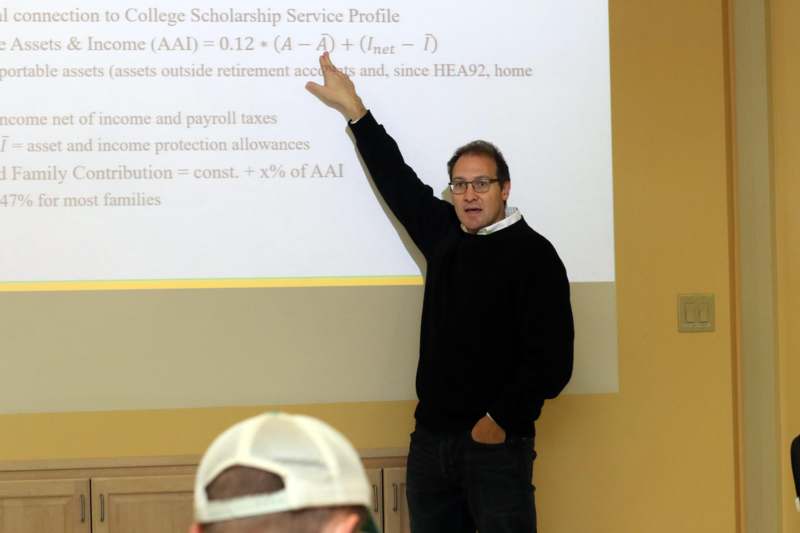
The talk focused on the effects on labor supply, specifically female labor supply, caused by the changes in capital acquisition and allocation as a result of taxes implied by the financial aid formulas. Dr. Grawe explained that these could create a negative substitution effect and a positive income effect if the family's borrowing and saving constraints limit intertemporal substitution of labor.

